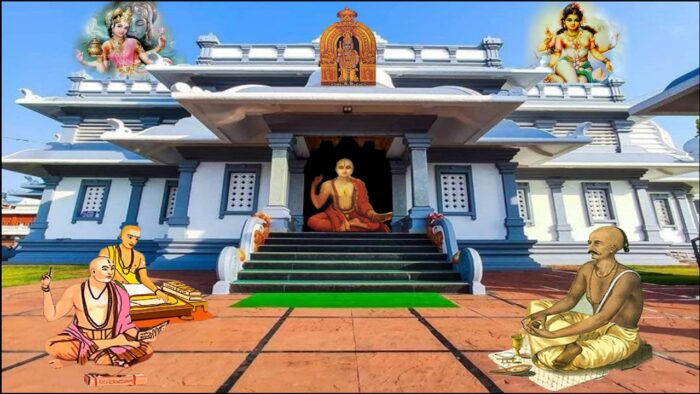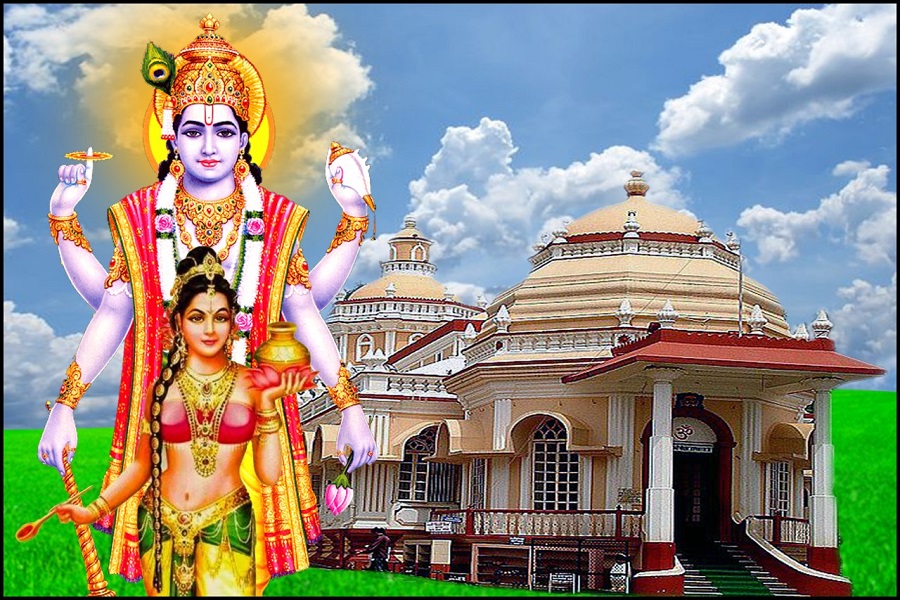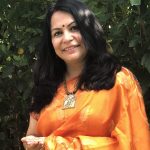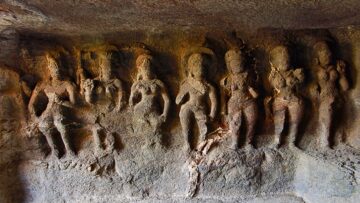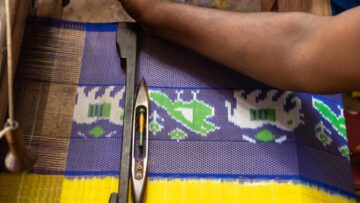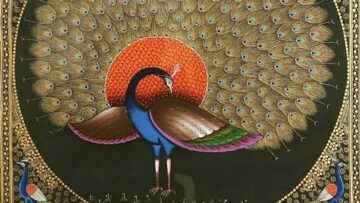Abstract
Gowd Saraswat Brahmins (henceforth referred to as GSB) are a small Hindu Brahmin community mainly settled in Goa, along the Konkan coast, and the coastal regions of Karnataka and Kerala. The GSB community of Goa and the Konkan coast have a tradition of Vaishnavism that goes back hundreds of years. Shri Madhvacharya of Udupi and one of the Ashtamathaas founded by him are credited with introducing Vaishnavism among the GSBs. Two of the four Mathas that guide the GSBs, the Partagali Matha and Kashi Matha follow the Vaishnava tradition. What is unique about Vaishnavism followed by GSBs is that there is a syncretic relationship with Shaivism as well. Shri Narsimha and Shri Damodar, both Vaishnava deities worshipped by the GSBs, are worshipped in Linga forms. This paper is an attempt to study the origins of Vaishnavism among GSBs and its role as a unifier through the turbulent times of the Portuguese invasion in Goa and the forced conversions. The paper attempts to study the role played by the Vaishnava Mathas in the socio-cultural evolution of the GSB community and its impact on the life of the people.
Methodology
The research was qualitative, quantitative, primary and secondary in approach. Secondary research involved researching the history of Vaishnavism in India, Vaishnavism in Goa and research into the history of the two Vaishnava Mathas that provide spiritual guidance to the GSB community. Primary research involved understanding of sayings in Konkani from community elders, investigation of rituals performed in a typical Vaishnav GSB household and a personal audience with the head of the Kashi Matha, HH Shri Samyamindra Teerth Swamiji.
Introduction
The GSB community of today was formed by the merger of several Konkani-speaking Brahmin communities, including Shenvi, Sasastikar, Bardeshkar, Pednekar, Kudaldeshkar, and Shenaipaiki. All of these groups share their mother tongue (Konkani), and a Kuladevata temple based in Goa. There were two major sectarian differences among these communities. The first group observed the Smarta tradition that followed the Panchayatana worship as laid down by Shri Adi Shankaracharya. The Smarta GSBs worship five main deities: Shiva (Śiva), Vishnu (Viṣnu), Devi (Devī), Surya, and Ganesh (Gaṇeśa), giving them equal importance. Originally, all Konkani speaking Brahmin communities followed the Smarta tradition. In later years, some started following the Vaishnav tradition and formed the second group, where Shri Vishnu is considered the principal deity, with other Hindu deities assuming a secondary position.
History of Saraswat Brahmins
The Saraswat Brahmins are considered to be the disciples of a great sage called Saraswat Muni, the son of Dadhichi. They are mentioned in the Vedas, the Ramayana, the Mahabharata and the Bhagavata Gita. The meaning of the word ‘Saraswat’ has more than one origin; one meaning refers to ‘the offspring of Saraswati, the goddess of learning’ and is interpreted as learned, or scholarly people. The other meaning points to a geographical origin, implying that the Saraswats once resided in the basin of the Saraswati river located in modern-day Punjab and Haryana. Hindu scriptures like the Mahabharata and the Puranas describe the Saraswats as learned in the Vedas. They concentrated on studying subjects like astronomy, metaphysics, medicine and related subjects and the dissemination of knowledge. Due to a massive tectonic shift in the Himalayan region, and resultant geo-morphological changes, the mighty river Saraswati started to dry up. As a result, the once green and fertile basin of the Saraswati began turning into a desert. The resultant famine forced the people who lived on the banks of the Saraswati to migrate to greener pastures. Some went to Kashmir in the north, while others went eastward to Trihotra in today’s Bihar. A few then made their way to the Konkan coast and Goa. This group came to be known as Dakshinatya Saraswats, to distinguish them from other Saraswat groups of the north.
There are two different theories about how the prefix Gowd came to be used to describe the Dakshinatya Saraswats. One theory suggests that these Konkani speaking Brahmins were called Gowd because they were followers of Monism, or Advaita, as preached by Shri Goudapadacharya, who is considered to be the Guru of Shri Govinda Padacharya. (His direct disciple, the great Adi Shankaracharya, is credited with the resurrection of Vedic religion in India after Buddhism and Jainism had eclipsed it for a while). Hence the GSBs are believed to have arrived in Goa via Kutch, and then via the sea route through the port city of Dwarka. This is the reason why the GSBs are also known as ‘दोरके’.
Per the Baroda State Gazetteer (1923) “the Saraswath is a very ancient Brahman tribe which still inhabits a tract in the north-west of India beyond Delhi, once watered by the famous Saraswathi River. It is said that they are descendants of Saraswathi Muni. They came from Punjab to Gujarat by way of Sind and Kutch with their Yajamanas, patrons, the Luhanas, Bhansalis and Bhatias. In religion they are Shaiva and also worship the Goddess Saraswathi.”
According to this view, Saraswats moved southwards from Gujarat mostly through sea routes, and did not come via Trihotra or Videha as described by texts like the Sahyadrikhanda of Skandapurana, or the Shatpat Brahmana. The other theory suggests that Dakshinatya Saraswats were called Gowd because they came to Goa from Trihotra in Bihar, a region then known as Gowda Desha. When these Brahmins came to settle down in Goa, they brought with them their deities: ‘Mahan Girish’ or Mangirish, Shakti or Shantadurga, Vishnu, Ganesh, and Surya. These five deities form the ‘Panchayatan’ that is the bedrock of Smarta worship.
In the Sahyadrikhanda of the Skandapurana, it is stated that Rishi Parashurama brought 96 families of Brahmins from Trihotra and settled them in Goa; 66 families were settled in an area known as Sahasashti in today’s South Goa and 30 were settled in an area known as Teeswadi. Later, 12 more families arrived and settled in an area known as Bardez. The names of these corroborate the legend even today. This story is also repeated in the कोंकणाख्यान, a Marathi epic composed by an anonymous poet in the early 18th century.
Since a pescatarian diet was prevalent among many Bengali Brahmins, and because of the apparent similarities between Bengali and Konkani, many scholars have suggested that Saraswats came to Goa from the region between Bihar and Bengal.
P. S. Kamat mentions that “Saaraswats had their original abode in Punjab from where they seem to have migrated to the East in northern Bihar known as Gowda Desha. It is from this place that a new stream of this community is called the GSB. The early Saaraswats were followers of Shankar philosophy, with a blend of Shaakta worship of Bengal and influenced as well by Tantrika school of Kashmir and other northern parts of India. This state of things continued till the advent of Shri Madhvacharya in the I3th century.”
Devi worship is common among the Saraswats of Goa, both among the Smartas and Vaishnavas. Basti Pundalik Shenoy attributes it to the Shaakta and Tantra traditions of eastern India and Bihar. When Saraswats moved from Trihotra to the region of Gomantaka, they brought with them the goddesses they used to worship. The historic temples of Kamakhya in Kamarupa in Assam, and the Mahalsa Narayani temple in Trihotra have their own counterparts in Goa.
However, both these theories confirm that all Saraswats were Smartas when they came to Goa. The conversion to Vaishnavism happened much later, in the 13th century.
(Figure 1: A still from the Mangeshi Temple, Ponda Taluk, Goa)
The Importance of Vaishnavism as a Philosophy
The core concept of Vaishnavism is personal devotion rendered to one God, Shri Vishnu. It has neither the complexity of the Vedic philosophy, nor does it have the philosophical hair-splitting debates of the Upanishads. Vaishnavism determines that the path to Moksha is through simple Bhakti, or devotion, towards Shri Vishnu.
Hemchandra Raychaudhuri states in his book, Materials For The Early History Of The Vaishnava Sect, that “Vaishnavism is the name given to the Bhakti religion which recognizes Vishnu, as the supreme God.” In the Rigveda, Shri Vishnu is considered one of the Adityas or manifestations of the Sun God. Vishnu worship has been in existence in India for thousands of years. The Greek ambassador, Heliodoros, refers to himself as a ‘Bhagwata’ in an inscription on a column he erected at Vidisha that dates back to the second century B.C. Shri Vishnu in his Dashavataras (ten incarnations) is revered all over India.
Vaishnavism was the state religion of the Guptas as well as the Hoysalas. It was also the philosophy espoused by religious reformer saints like Shri Ramanuja in Tamil Nadu, Shri Chaitanya in West Bengal and Odisha, Narasi Mehta in Gujarat, Shriman Shankardeo in Assam, Shri Madhvacharya and Purandara Dasa of Karnataka and many saints of Maharashtra like Sant Dnyaneshwar, Namdev and Tukaram.
Madhvacharya’s Teachings
Shri Madhvacharya was a 13th century spiritual leader from Karnataka who expounded the Dwaita philosophy that insists on Bhakti as the only way to attain Moksha. He propounded that devotion to Shri Vishnu is the ultimate truth, with Vayu being the mediator between the Jeevatma and the Parmatma. हरि: सर्वोत्तम: ! वायु: जीवोत्तम: is the main mantra followed by the Vaishnavas that subscribe to the Madhva Matha, including the Vaishnava GSBs. In fact, it is also the घोषवाक्य of Shree Gokarn Partagali Matha, the first Vaishnava Saraswat Matha.
A poem extolling the spiritual victories of Madhvacharya, Madhva Vijaya, mentions that the Saraswat Brahmins of Goa were all Smartas and followers of the Kaivalya Matha before Shri Madhvacharya introduced them to Vaishnavism, as quoted by V P Chavan in his book, Vaishnavism Of The GSBs.
However, the unique aspect of Shri Madhvacharya’s version of Vaishnavism was that he never prohibited anyone from worshipping other Gods like Shiva, Devi and Ganesha. GSBs who became Vaishnavas often continued to worship their old Shaivite Kuladevatas such as Shri Ramnath, Shri Nagesh, and Shri Ravalnath even after becoming Vaishnavas. Another unique thing about Vaishnavism among GSBs is that they worship Shri Damodar, who is a form of Shri Vishnu in the linga form traditionally reserved for the worship of Lord Shiva.
As O. P. Chavan states in his book, “Practically there is no difference either in the form of worship or ceremonies performed in the temples connected to Smarta and Vaishnava sects in Goa. All these temples of the GSB community are freely open to all, irrespective of the sect to which, they may belong. Even the priests offer a combined worship to Gods of these two different sects as ‘श्रीमंगेशमहालक्ष्मीनमस्तुभ्यं.’” There was never any rigid ban on inter-marriages between these two sects either. My grandparents had an arranged marriage in 1910, and while my grandfather was a Vaishnavite GSB belonging to the Partagali Matha, my grandmother was a Smarta attached to Kaivalya Matha.
The Mahalsa Narayani Temple at Mhardol
Shri Mahalasa Narayani of Mhardol is the Kuladevata of many Vaishnava Saraswat Brahmins including my family. At Mhardol, she is worshipped as Mohini, the female incarnation of Shri Vishnu. The Murti wears a यज्ञोपवीत (sacred thread), and is offered garlands of Tulasi leaves, the favorite of Vishnu. On Ekadasi days, the Murti is adorned with Shringara in many forms of Vishnu, including Vithoba Shringara, Thirupati Venkatramana Shringara and Shri Ram and Shri Krishna Shringara.
However, the same Mahalasa Devi is also worshipped as the consort of Shri Khandoba in Maharashtra, who is supposed to be an incarnation of Lord Shiva. In this form, she is considered to be an incarnation of Goddess Parvati. Iconographically, it is obvious that the Murti is a fierce one.
The Murti of Shree Mahalasa has four hands. The right upper hand holds a Trishul (Trident), the right lower, a sword and the hair of a Rakshasa. The left upper hand has a Kalasha. Vaishnavas believe it to be the pot of Amrita, while Shaivas believe it to be Surabhajan, alluded to, in the description of some of the forms of Bhagavati, mentioned in the tantrik texts. The left lower hand of the Devi holds a severed head. The Goddess stands on a prostrate figure either human or Rakshasa. There is an animal resembling a tiger licking the blood dripping from the severed head.
There are no visible Vaishnava symbols like the shankh, chakra, gada, or padma near the Murti. In his book, Folk God Of The South, Khandoba, R. C. Dhere has opined that the goddess mentioned as ‘Malajdevi; or ‘Malchidevi’ in the 11th century CE Kannada inscriptions of Devi Hosur refers to Mahalasa as a Shaakta Goddess, but he has also mentioned references including a quote by Sant Dyaneshavar and Eknath that mention the unification of Mahalasa–Mohini.
In conclusion, it can be said that the Goddess Mahalasa symbolizes the syncretism between the Smarta and Vaishnava traditions among GSBs.
History Of Saraswat Mathas
Shri Gaudapadacharya Matha, the first Matha of the Dakshinatya Saraswat community dedicated to the study of Advaita Vedanta, was established in the memory of Shri Goudapadacharya in the Goan village of Keloshi in the 8th century AD. It is considered to be the oldest Matha of the Saraswat community. The Matha was later shifted to Kaivalyapura or Kavale, its present location, as the original Matha at Keloshi was destroyed in 1564 AD by the Portuguese rulers who had captured Goa by then.
To this day, the spiritual heads of the Kaivalya Matha are known as Goudapadacharyas and not Shankaracharyas, even though they follow the same tradition of Advaita as follows by Shringeri Matha. The Kaivalya Matha is the Adi Mathaa (first Mathaa) of the GSB community, and commands a vast following among the Smarta Saraswats.
In the 13th century, Dwaita Vedanta, as advocated by Shri Madhvacharya, became popular in coastal Karnataka as well as Goa. Many Saraswats adopted Vaishnavism because it was considered to be a doctrine that was less rigid and easier to follow, being a part of the Bhakti tradition.
The History of Shri Gokarn Partagali Matha
The first Vaishnava Saraswat Matha was established in the year 1475 CE when a young boy from the community, Shree Narayan Teertha was initiated into Sanyasa at Badrikashrama by Shree Ramachandra Teerth Swamiji of Palimaru Matha, one of the Ashtamathas of Udupi founded by Shri Madhvacharya. The Partagali Matha official website recounts the unbroken Guru Parampara of this Matha, starting from the first Guru, Shrimad Narayana Teertha Swamiji in 1475 to the current Mathaadhish, HH Shrimad Vidhyadhish Teerth Swamiji.
Shrimad Narayan Teerth Swamiji founded the first Gowd Saraswat Madhwa Matha in Varanasi and later at Bhatkal in Karnataka. The third head of this Matha, Shrimad Jeevottam Teerth was a great Sanskrit scholar and a very dynamic leader. He travelled all over India in the 15th century CE, at a time when travel was arduous and could be done only by foot. Legend says that he found three Vithala Murtis in the river Sheela in Nepal made from Panchloha metal. He named them Bhoovijayavithal, Digvijayavithal and Veeravithal respectively. He started a Matha at Gokarna where he established the first. The second was installed at Basroor, the birth place of Swamiji, and the third Murti was in his daily worship and travelled with him. This same Murti is in the daily worship of the present day Swamiji. These three Murtis of Shri Vithal, a form of Shri Vishnu signify the three attributes of Vaishnavism as propounded by Shri Madhvacharya, Adhibhoutika (physical), Adhidaivika (mental), and Adhyatmika (spiritual).
The Matha at Partagali in Goa was founded by the sixth Guru in this tradition, Shrimad Ramchandra Teertha. The Matha website says that Swamiji found four Shilamurthis in a cave in a hill in Gokarna, of Sri Ram, Sri Lakshman, Seeta Devi and Hanuman. Legend says that Swamiji was told by Shri Vishnu in a dream to carry the Pratimas towards the north and consecrate them at a place where they will become very heavy. Accordingly, Sri Ramachandra Teertha started walking northwards with the Shilamurthis, and established them at Partagali in Goa. The Matha was established in 1656, at a time when Partagali was a part of Shiveshwar Mahal, an area then controlled by the Hindu Kings of the Soundekar dynasty. Since then, this Vaishnava Matha has been known as Shree Samsthan Gokarn Partagali Jeevottam Matha, and worships two patron deities, Shri Ramdev, and Veer Vithal, both forms of Shri Vishnu.
The Gokarn Partagali Jeevottam Matha provides spiritual guidance to the Sashtikar families of Saraswats. Most of the Matha’s followers reside in Goa or in coastal Karnataka and Mumbai.
History of Shri Kashi Matha Samsthan
The biggest exodus of the Saraswats and other Hindus from Goa began after the brutal Portuguese oppression in the 16th and 17th centuries CE. Even before the invasion, however, the community had started migrating to escape religious oppression. Before the Portuguese arrived in Goa, it was twice attacked by Islamic invaders, first in 1328, when the army of Delhi Sultans (Tughluqs) ransacked the Kadamba capital of Chandrapur and destroyed Hindu temples, forcing many GSBs to leave their homes and flee to Kerala and Karnataka.
However, when the resurgent Hindu empire of Vijayanagar became powerful in Karnataka, Goa fell under their rule and peace was restored. The prosperous Vijayanagar rule created opportunities for the Saraswat youth to became village accountants, clerks, interpreters and higher officials, administrators and even soldiers. There was also ample scope for trade as Goa and the Konkan coast had many ports. Saraswats often became interpreters as they had a flair for languages. During this period Cochin (Kochi), Cannanore (Kannur), Tellichery (Thalasherry), Kumble, Ullala, Mangalore, Mulki, Malpe (Udupi), Basrur, Gangoli, Bhatkal, Tadadi, Mirjan, Kumta, Honavar, and Ankola were all major ports on the West Coast that had Saraswats dominating in the overseas trade.
Goa was again conquered by the Bahmani Sultans of Gulbarga in 1472, causing a fresh wave of migrations to escape religious persecution. Kochi became an important settlement for the emigrés as it already had a thriving colony of Saraswats who had settled themselves well. The Kerala district Gazetteer (Ernakulam 1965) states,“The Gouda Saraswaths locally called Konkanis are immigrants from Goa the southernmost part of Konkan. They are also known as Sasastikars as it is believed they belonged to Sashti (modern Salcette) in Goa.” The Gazetteer also informs that,“Even today there is a plot of land in Mattancheri called Sashti Parambu to commemorate the fact that the Saraswaths of Kochi belonged originally to Sashti.”
Most of the Saraswats who had migrated from Sashti had converted to Vaishnavism when Shri Madhvacharya visited Goa. As they found travel to Goa increasingly difficult in the 16th century following the wanton Portuguese destruction of temples and policy of rigid religious persecution, they became disciples of the Kumbakonam Matha, a branch Math of the Shri Raghavendra Swami Matha, Mantralaya today.
The Mathadhipati of that Matha was Shrimad Surendra Teertha Swamiji. He had a disciple named Shrimad Vijayindra Teertha Swamiji who brought to Kochi the idol of Lord Venkateswara from the Vijayanagar empire, that was once worshipped by King Saluva Narasimha Raja.
When Shrimad Vijayindra Teertha Swamiji was observing Chaturmaasa at Kochi, the GSBs there made a request that the GSB Samaj should have its own Dharma Peetha and a Dharma Guru. Shrimad Vijayindra Teertha Swamiji in consultation with his Guru Shrimad Surendra Teertha Swamiji acceded to the request and a young boy from the community was initiated into Sannyasa in the holy city of Varanasi. He was named Shrimad Yadavendra Teertha Swamiji.
Upon initiation, he was given the Murti of Shri Ram Raghupati for worship by his Guru and other paraphernalia, as befitting a Mathadhipathi. Thus Shrimad Yadavendra Teertha Swamiji became the Mathadhipathi of Shri Kashi Math Samsthan which was founded in Varanasi at the behest of the GSB community of Kochi in 1542 AD.
The predominant deities of the Kashi Math Samsthan are Shri Ved Vyasa, bestowing jnana (knowledge and wisdom), Shri Rama, the embodiment of Dharma, and Shri Narasimha, signifying fearlessness. All GSBs that follow Vaishnavism are the followers of either the Shree Gokarn Partagali Matha or Shree Kashi Matha Samsthan. This history is based on the account of Shrimad Sudhindra Teertha Swamiji, 20th Mathadhipati of Shri Kashi Matha Samsthan, as told to Shri V. Sudhish Pai on Jan 26, 2004, and the official website of the Matha.
Vaishnava Rites and Rituals Among GSBs
Taptamudradharana is an ancient Vedic ritual, considered essential for a Vaishnava. Mudhradharana is the act of the Guru branding the marks of Shri Vishnu, chakra and shankha, on the disciple, thus initiating them into the faith using heated mudras.
Even during the daily Sandhyavandana pooja, the Vaishnava Saraswat is supposed to mark themself with the symbols of Shri Vishnu, the shankh, chakra, gada and padma on the temples, and the chest and the arms using a white clay called Gopichandan. In addition, there is a square stamp called the Narayan Mudra, with nine small squares on it, each bearing a letter from the Narayan Ashtakar Mantra, ऊॅंनमोनारायणाय that has to be used on the navel.
A few decades ago, GSB Vaishnava women used to wear kumkum in a straight vertical line and men used charcoal to anoint their foreheads in a straight vertical line. Even today, many follow this practice for religious functions. Men also tuck a tulasi leaf behind their ear. After a pooja or a religious function is over, a Vaishnava GSB will offer water and say कृष्णार्पणमस्तू, while the Smarta GSB will say ब्रह्मार्पणमस्तू.
Many Vaishnava GSBs fast on Ekadasi days and celebrate Janmashtami and Tulsi Vivaha with great fervor. However, they celebrate Ganesh Chaturthi with equal devotion.
Konkani proverbs like:
आसल्यारअष्टम, नासल्यारएकादस
शिवरात्रिगेरएकादसआयली
ओतुनगेल्लेदूदकृष्णाकअर्पण
उपजल्लेकडेनएकादस, दिल्लेकडेनशिवरात्रि
not only refer to Vaishnava festivals, but they also underline the importance of Shaivite festivals like Shivaratri, thus proving that the Vaishnavism of GSBs is concerned more with the philosophical aspect of Vaishnavism than the कर्मकांड aspect.
Conclusion
The Vaishnavite movement, spearheaded by Shri Madhvacharya is a great religious movement that provided spiritual guidance and succor to a community that was forced to migrate multiple times due to religious oppression. Dwaita Siddhanta, with its emphasis on Bhakti appealed to a section of GSBs, but they did not abandon their devotion to their Kuladevatas, from the older, Panchayatana form of worship. Vaishnavism among GSBs is a gentler, syncretic form of worshipping Shri Vishnu as the Supreme God, while making space for other deities in the Hindu pantheon. The two Vaishnava Mathas of the GSBs, Shri Samsthan Gokarn Partagali Jeevottam Matha and Shri Kashi Matha Samsthan have done a yeoman service in providing spiritual guidance to a community in distress. They continue to guide the community even today. In conclusion, Vaishnavism among the GSBs is a liberal, tolerant, simple doctrine that shows an easy path to Bhakti.
References
- Author Unknown, कोंकणाख्यान, V M Salgaonkar Pratishthan
- Bhandarkar, R. G – Vaisnavism, Shaivism and Minor Religious Systems. Indological Book House, Varanasi
- Chari, Srinivasa S. M – Vaisnavism, It’s Philosophy, Theology And Religious Discipline. Motilal Banarasidas Publishers, New Delhi
- Chavan, V. P – Vaishnavism Of The GSBs. Asian Educational Service
- Dhere, R. C – Folk God Of The South, Khandoba, Padmagandha Prakashan
- Dhume, Vinayak – देवभूमिगोमांतक, All India Saraswat Foundation
- Suneeta, L – Socio -Cultural Background of the Gaud Saraswat Brahmin Community As Reflected in Konkani proverbs, Sukritindra Oriental Research Institute, Kochi
- http://partagalimath.org/shri-narayan-teerth/
- https://seshagiriprabhu.wordpress.com/tag/shree-mahalasa-narayanihiva/
- https://srimad.org/?p=323
- https://www.kashimath.org/origin/
- Keni, Chandrakant (Editor), Saraswat Magazine, Special Issue, Vol.IV-No4
- Mankekar, Kamala – Culture and Religious Traditions In Temples Of Goa, Publications Division, Government Of India
- Nayak, Jyoti G – A Study on Culture of Goud Saraswat Brahmins. International Journal of History and Cultural Studies (IJHCS)
- Phaldessai, Pandurang – Folk Culture of Goa. Newspaper Article
- Raychaudhuri, Hemchandra – Materials For The Early History Of The Vaishnava Sect. R N Bhattacharya, Kolkata
- Shenai, Basti Pundalik – सारस्वतब्राह्मणांचोप्राचीनइतिहास, Vishwa Konkani Kendra, Mangalore
- Sinai Khandeparkar, Vinayak – The Eki-Beki Dispute and the Unification of the Gauda Saraswat Brahman Caste. Arizona State University, Arizona
- Swaminathan, K. D – Temples of Goa, a study. Proceedings of the Indian History Congress , 1974, Vol. 35 (1974), pp. 93-96
Feature Image Credit: Akash K
Watch video presentation of the above paper here:
Disclaimer: The opinions expressed in this article belong to the author. Indic Today is neither responsible nor liable for the accuracy, completeness, suitability, or validity of any information in the article.

